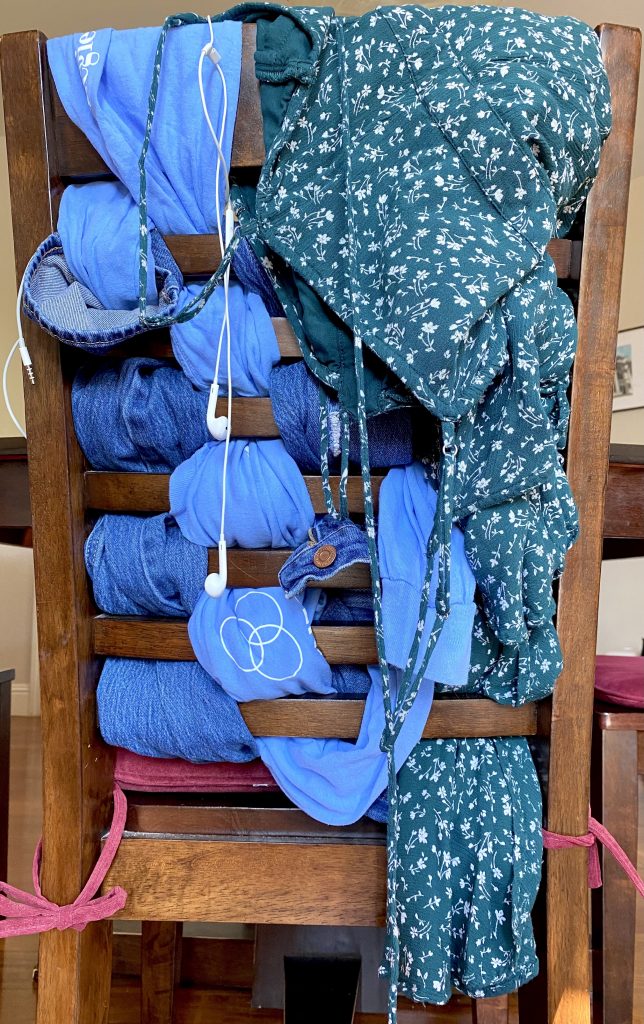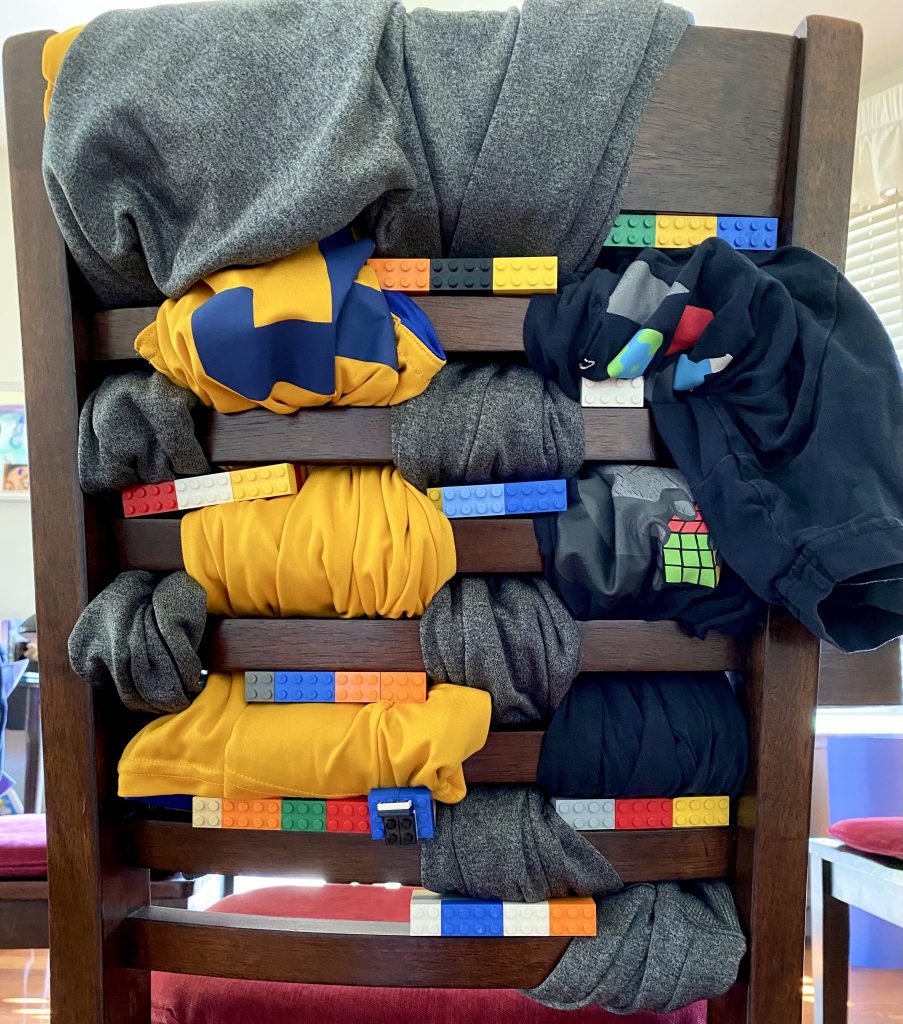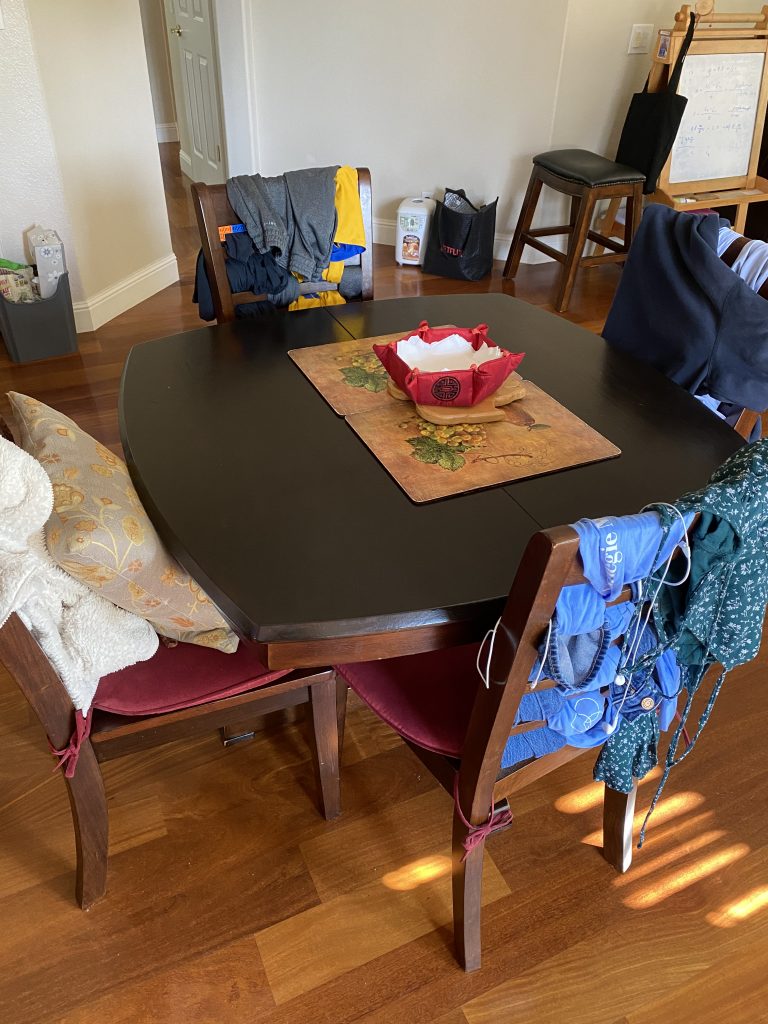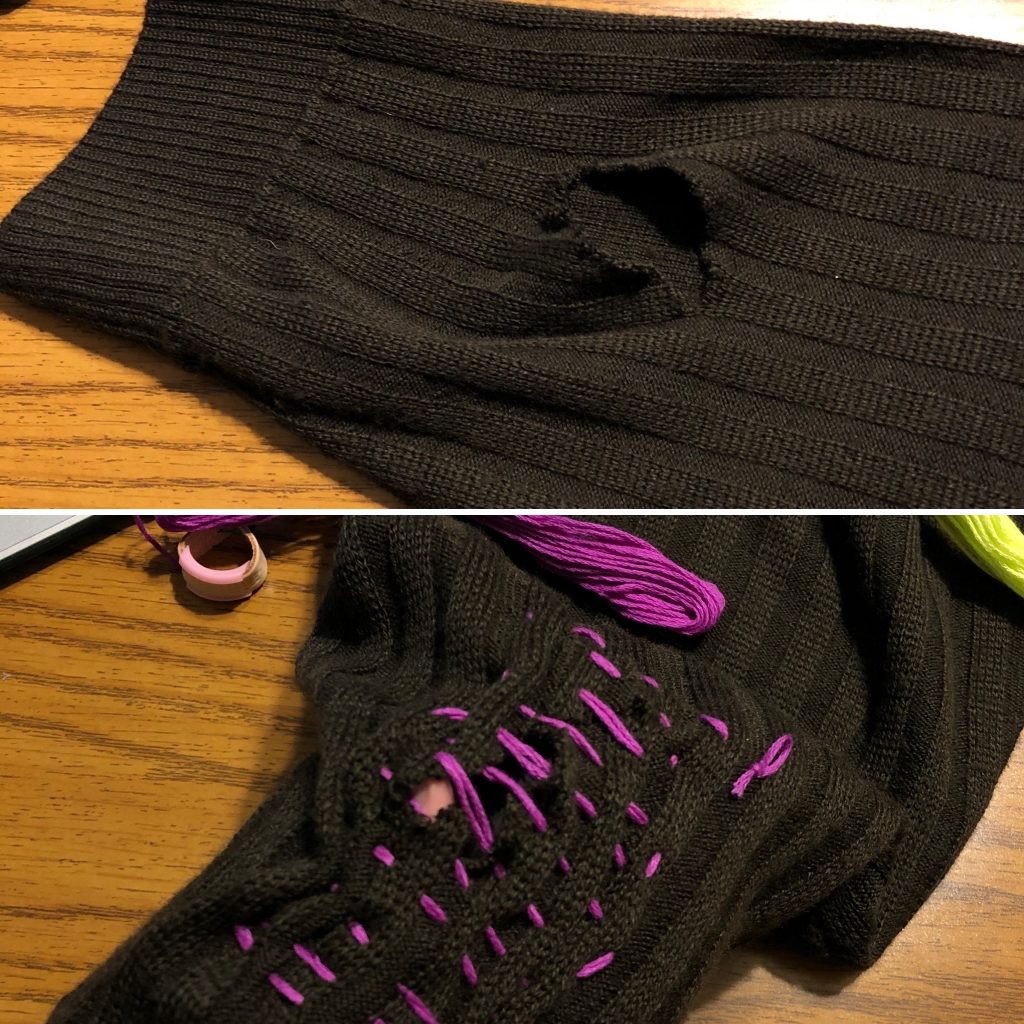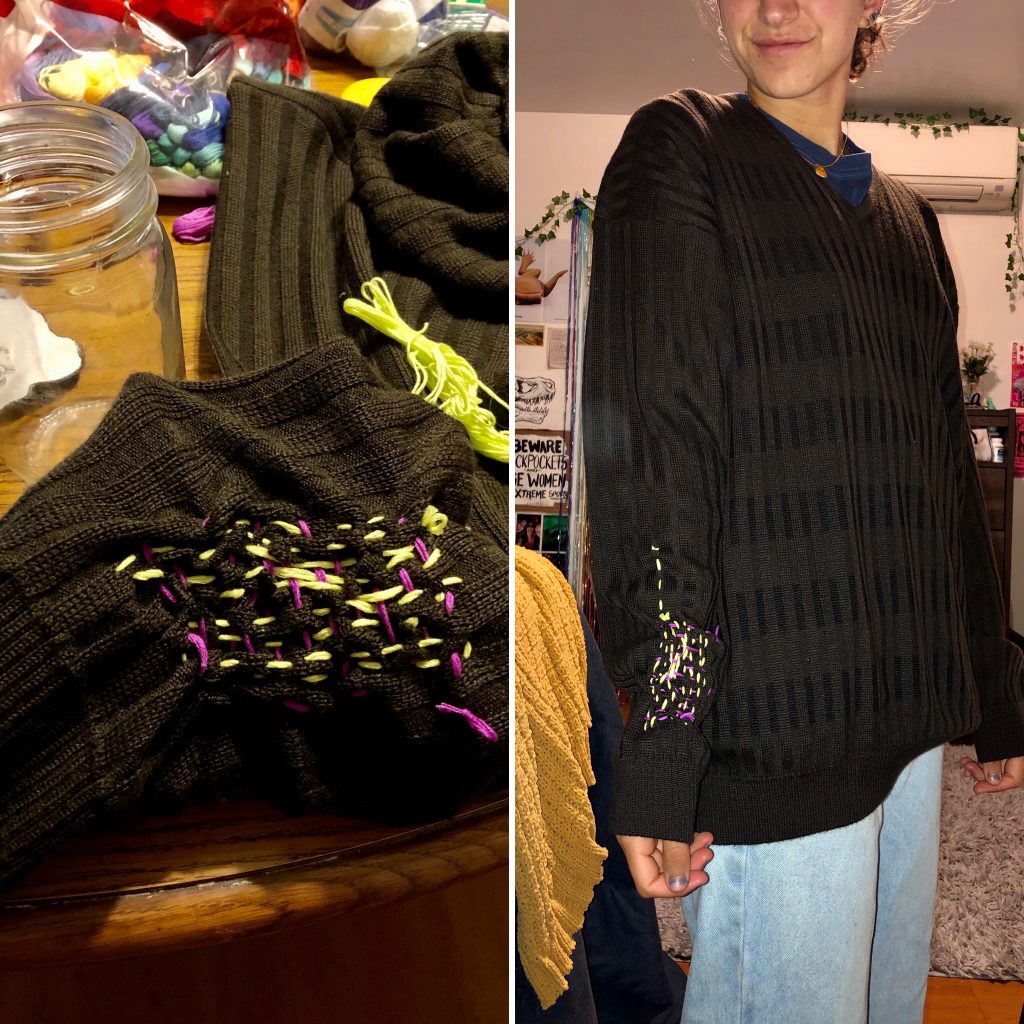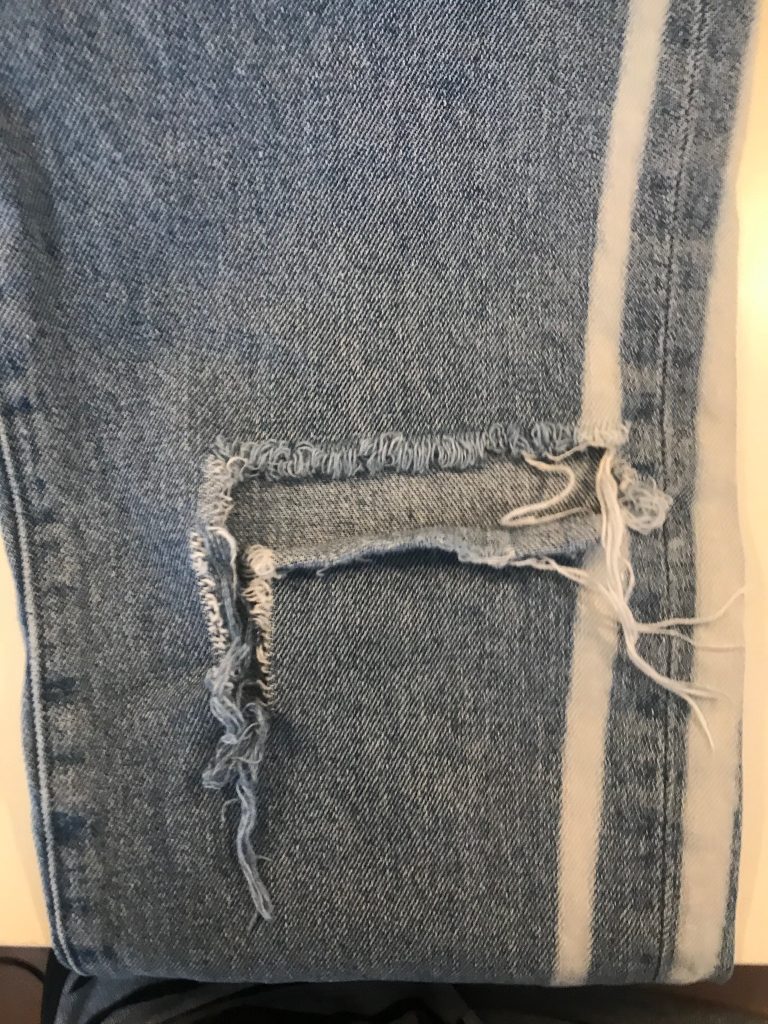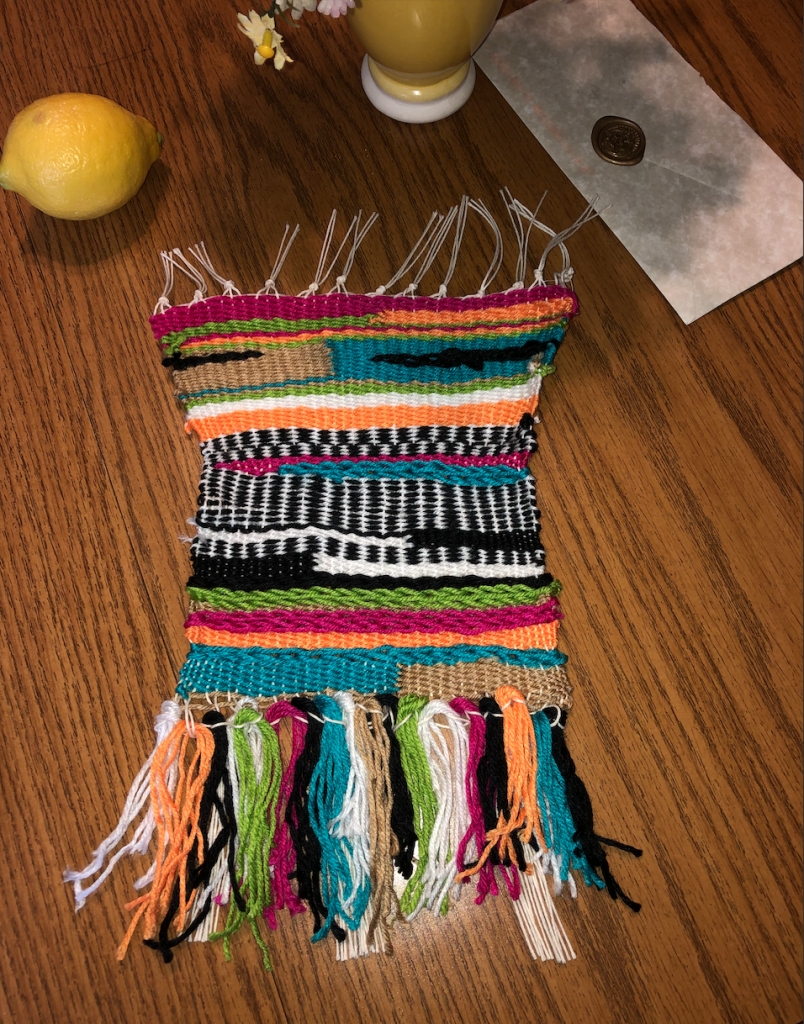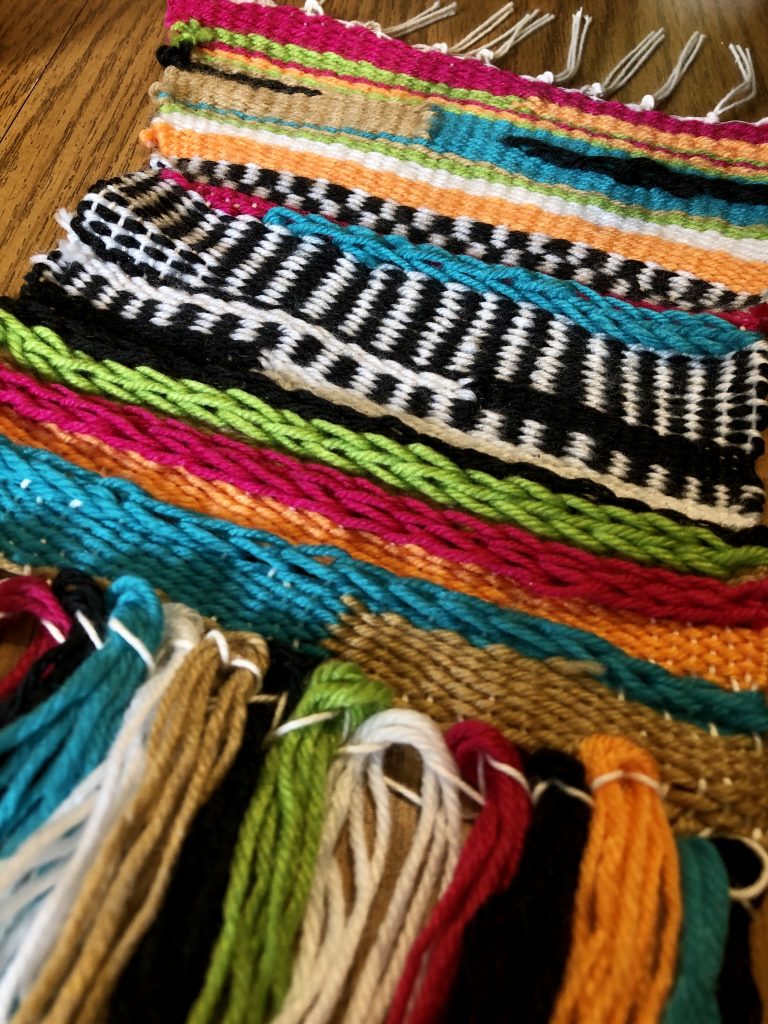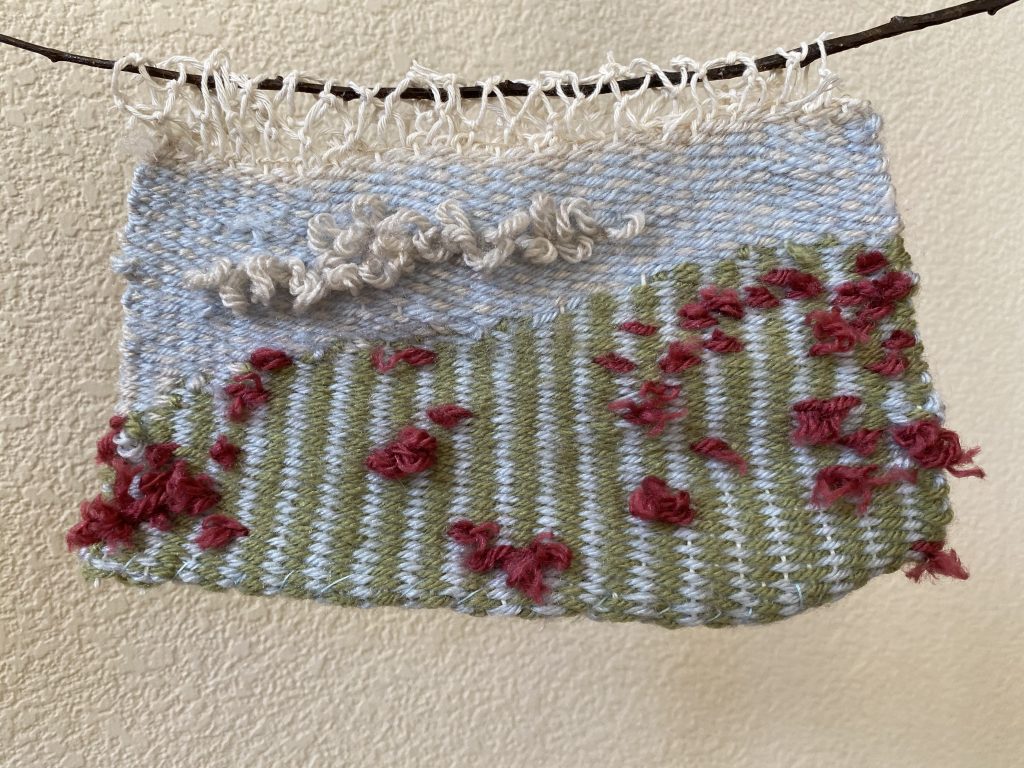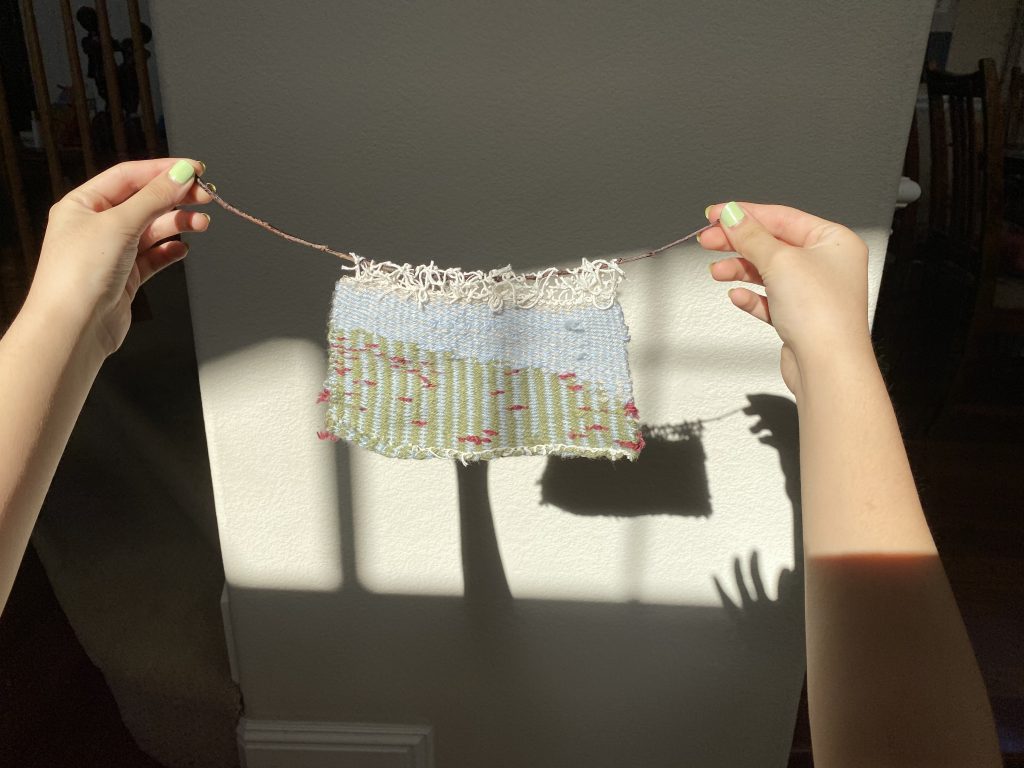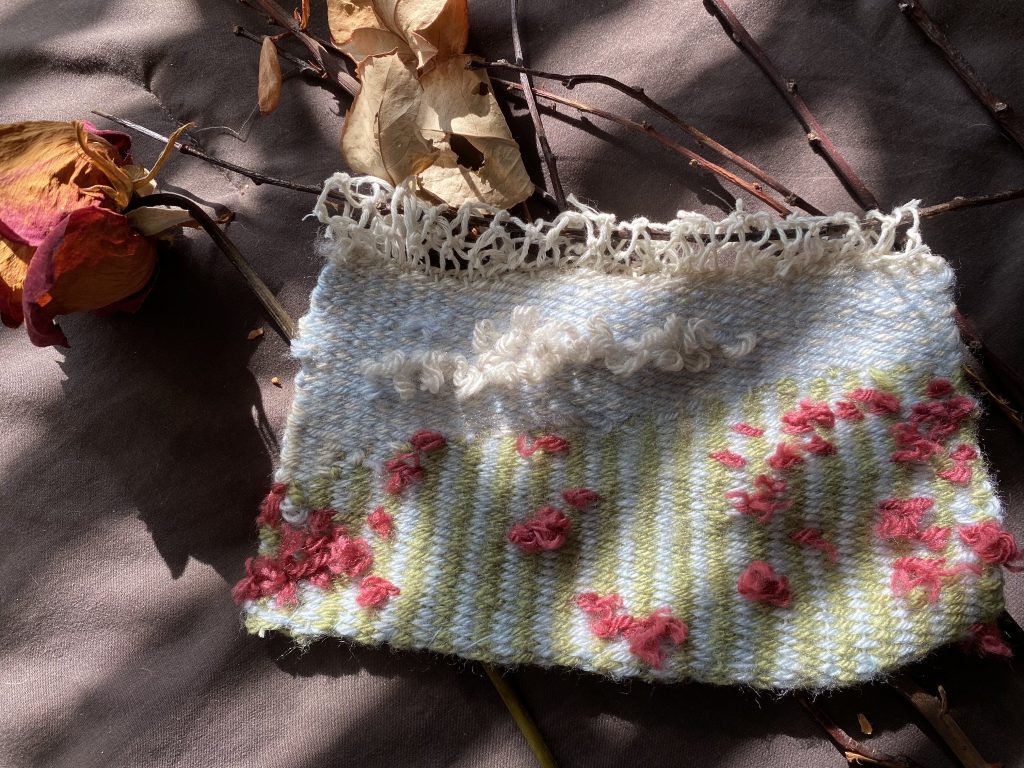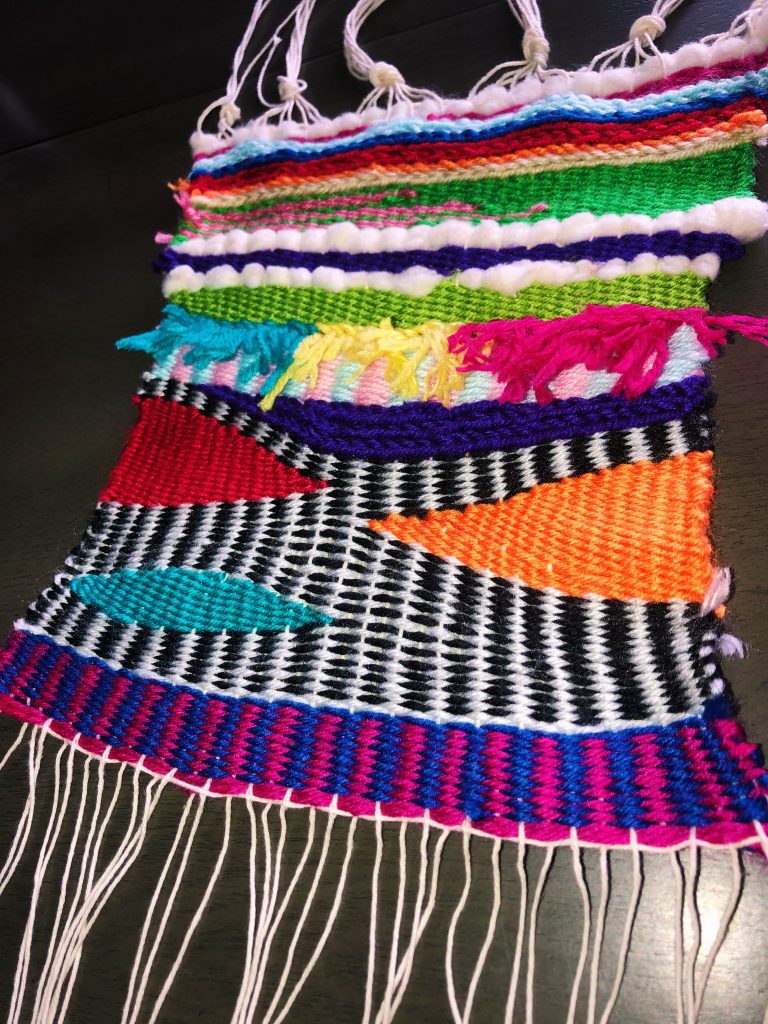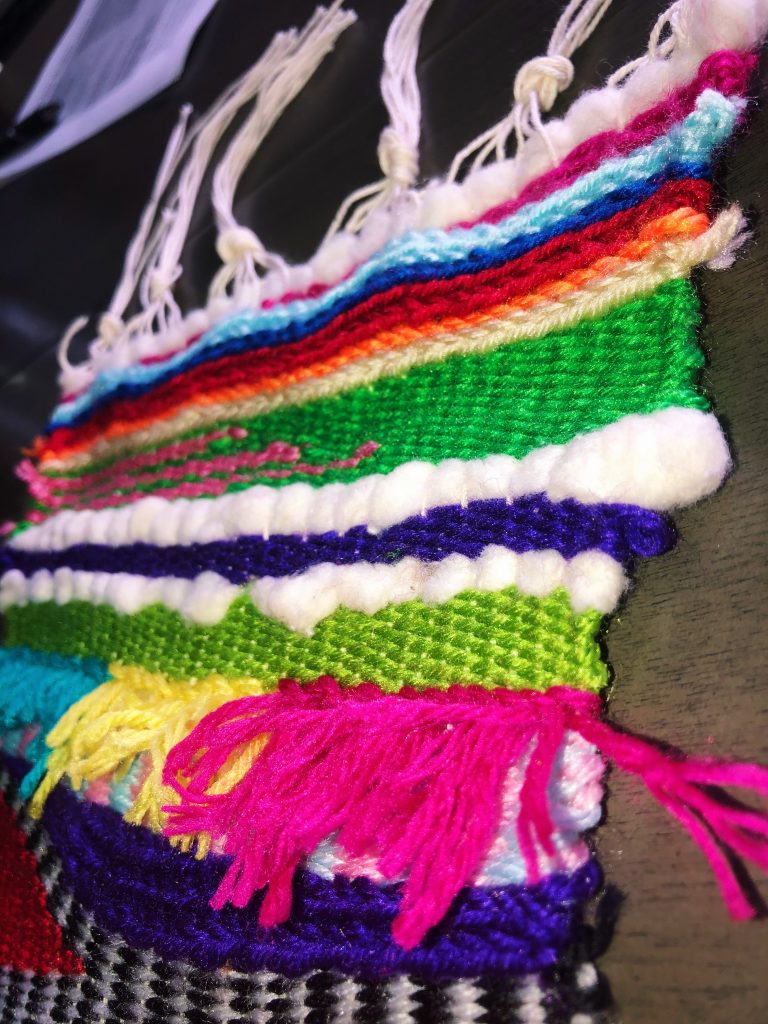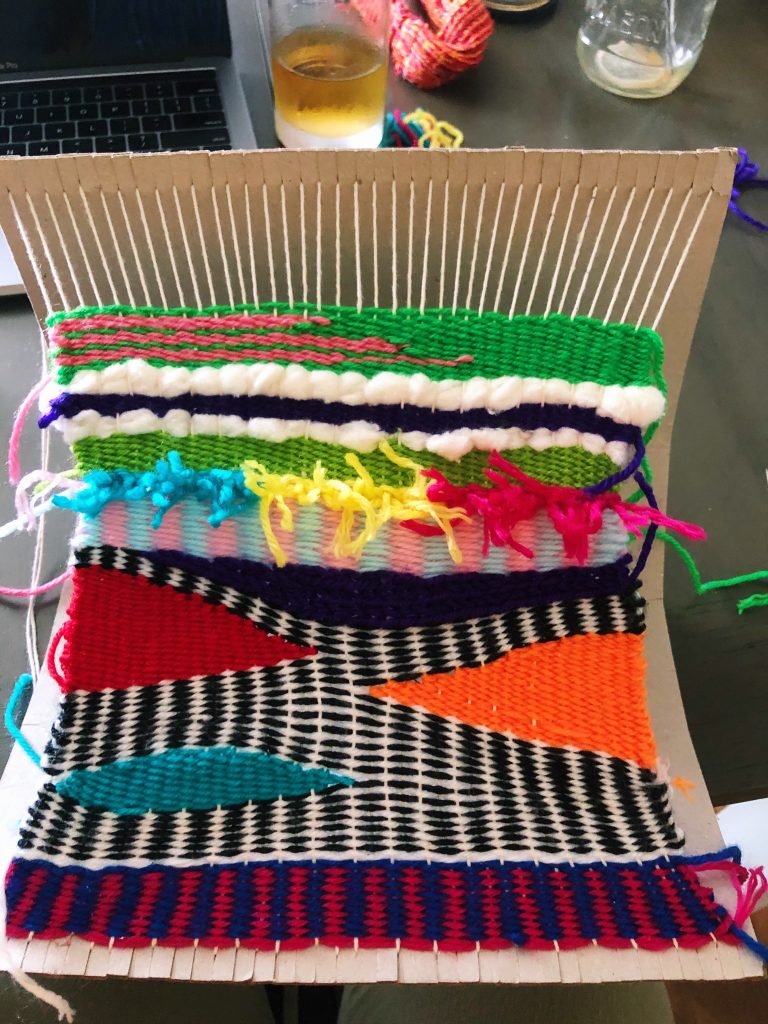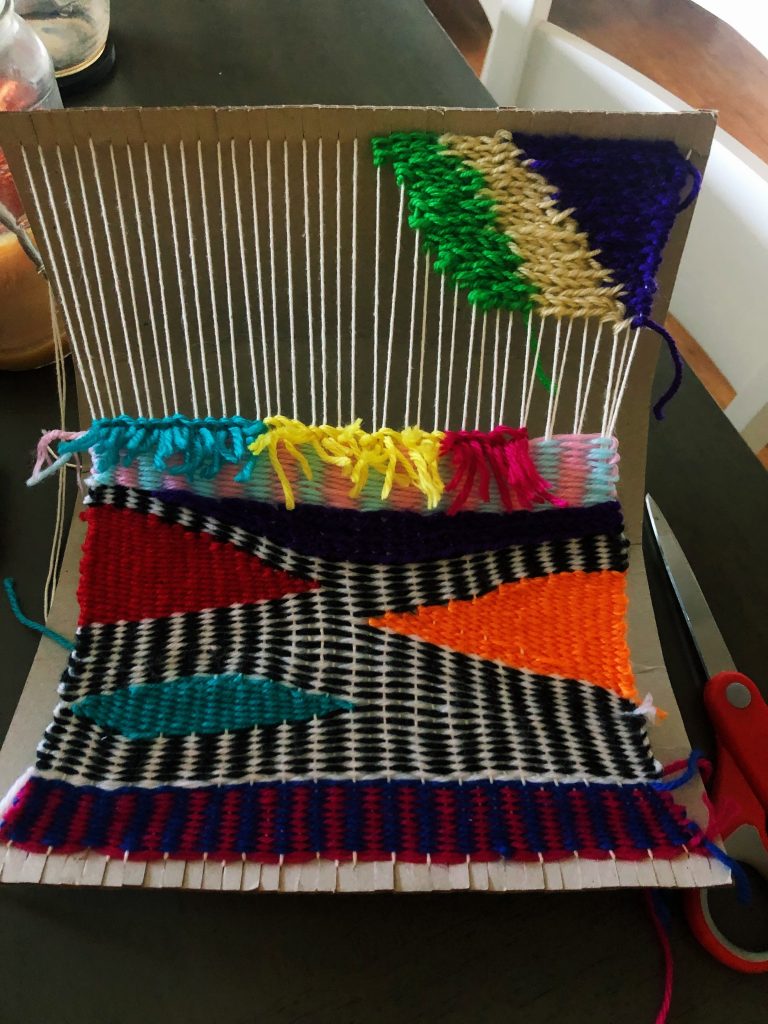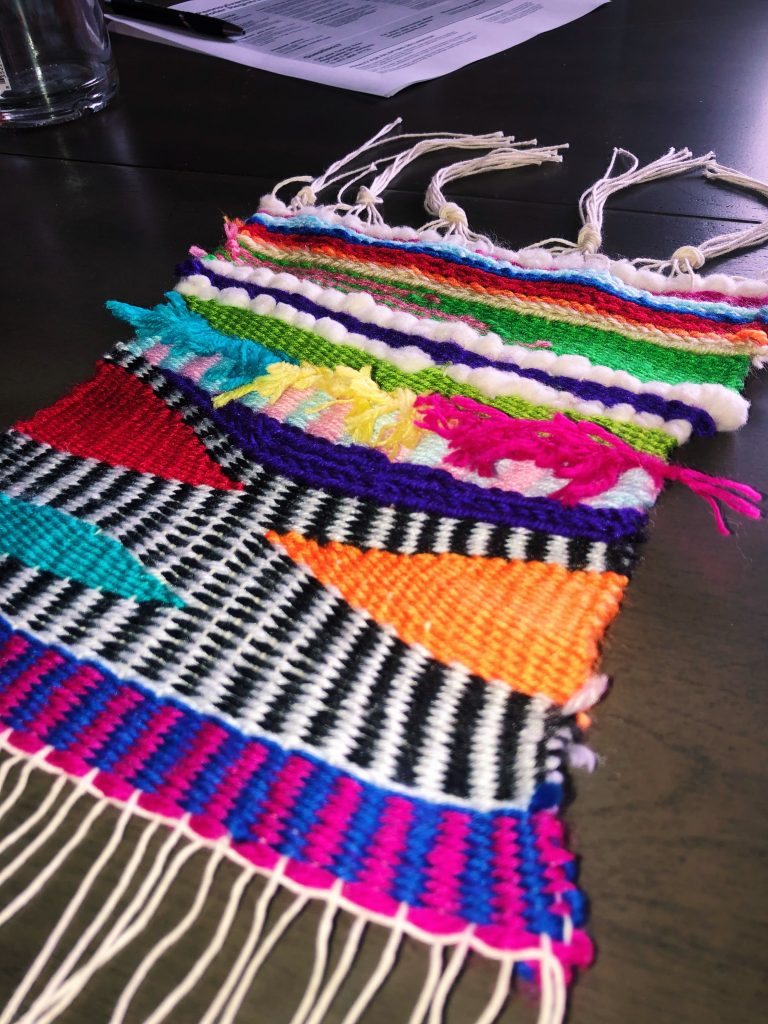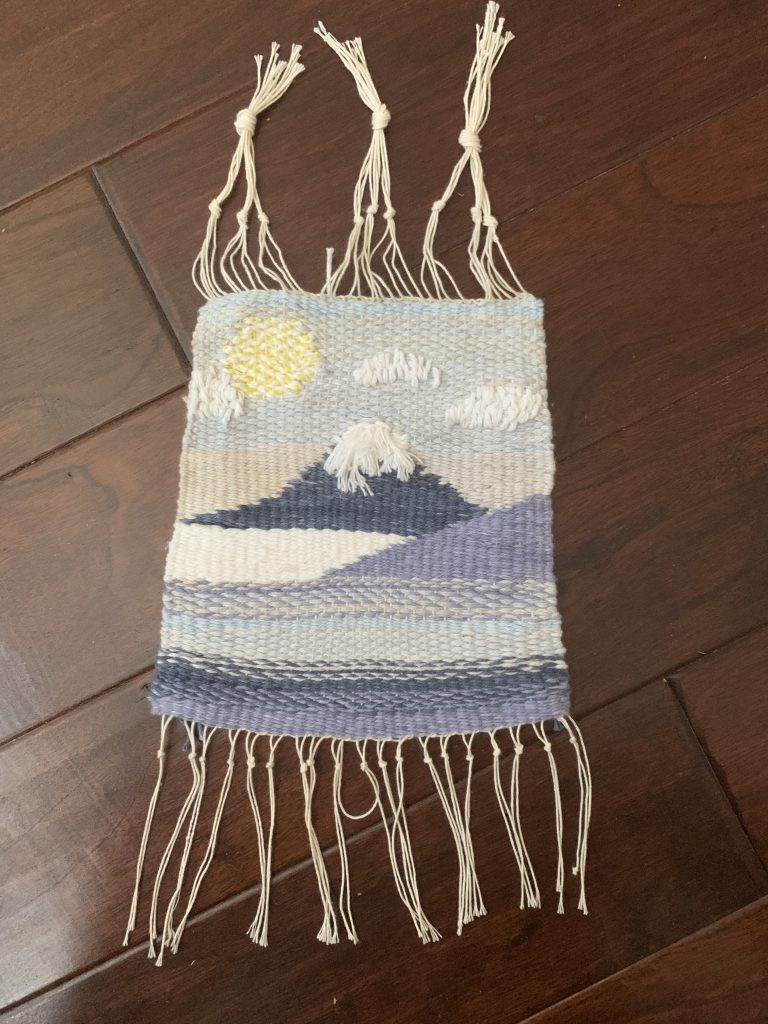
For this mending assignment, I chose to mend my boyfriend’s old Stanford sweater that he wore a lot in high school. When he came to CMU, he ended up roughly tearing off the letters with an x-acto knife, and left holes and a ghost remnant of what used to be. (He said it was because he liked the sweater but he did not want to represent Stanford while here.)
He hasn’t worn it in a while, so I thought maybe if I mend it and give it new meaning, it might be worthwhile. Instead of restoring the letters from before, what if I filled in some to spell out something else- I am leaning towards “SAD” right now, but maybe I could put in new letters.
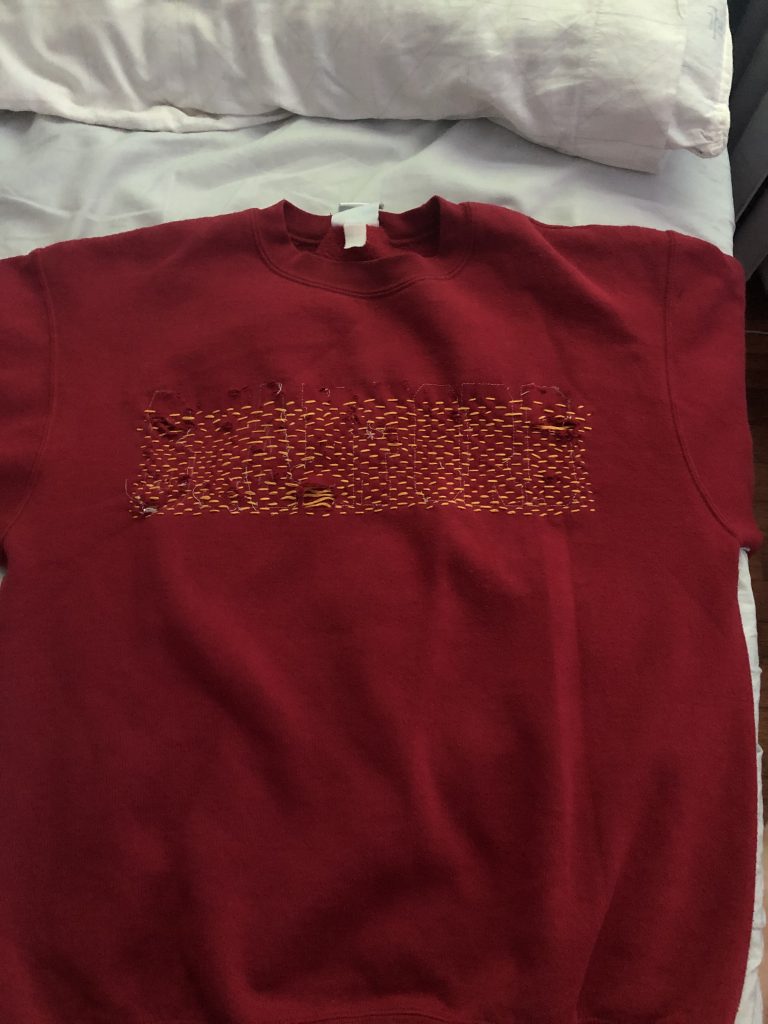
It took me a while to figure out what to do, but I decided to just take the pattern across the whole word horizontally, and only make vertical lines for the letters I want. I haven’t gotten there yet. It took around 4 hours just to lay the horizontal part across and I am still missing a little! (I ran out of that color of embroidery floss.) However, I am pretty happy with how it’s turning out, and how there now exists a lineage of alterations to this sweater with time and attitude.


